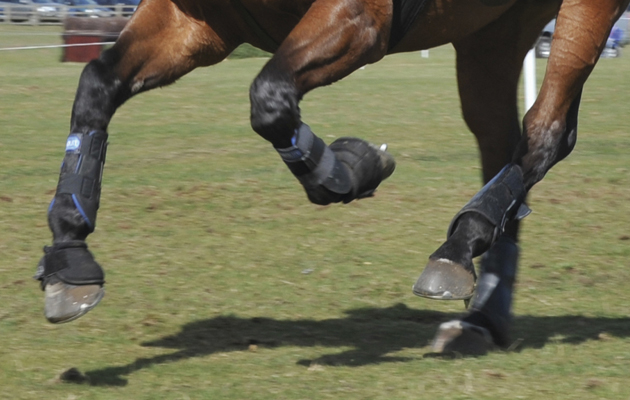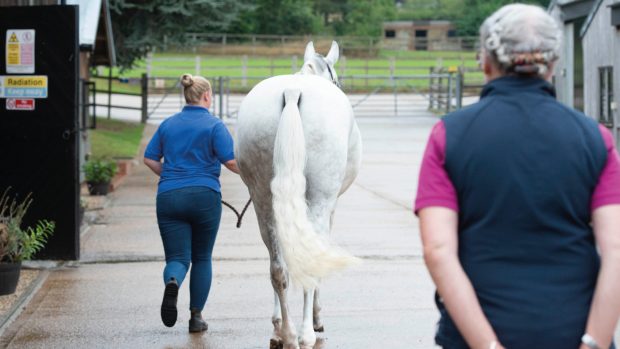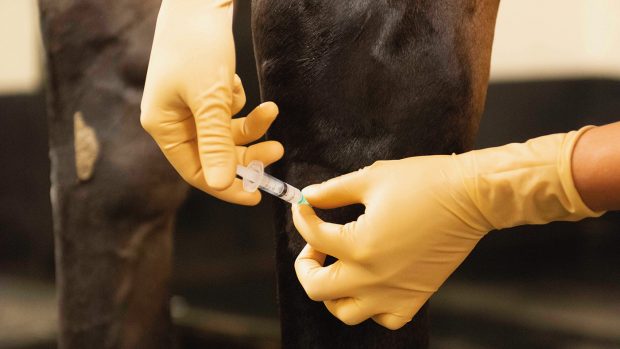Having to withdraw your horse from a competition because he is lame is frustrating, so are you doing all that you can to keep all four limbs healthy? The following handy checklist will help:
1. A horse’s lower limb is comprised of bone, joint and tendon and has limited protective muscle, hence legs are susceptible to damage. It is important to understand this.
2. Warming up isn’t just about preparing your horse to perform at his best, but also to prepare his body to work so that it stays injury-free. The transition of a horse’s body from resting to active should be gradual.
3. The warm up increases the mobility and elasticity of the horse’s muscles. This in turn minimises the amount of strain placed on tendons and ligaments.
4. Your discipline and the ground conditions will influence your warm up, but the basic principle is that a regular and repetitive regime is best.
5. A horse’s heart rate must rise in a controlled way in order to increase the amount of oxygen in the blood that supplies muscles and vital organs.
6. Cooling down after work is fundamental to a horse’s wellbeing, too. By letting a horse stretch his neck and relax his body, lactic acid can be released from his muscles, which reduces the risk of post-exercise injury.
7. Any leg protection should be removed immediately after work to prevent excessive heat building up in the tendons and ligaments.
Continued below…
Related features from horseandhound.co.uk

Vittoria Panizzon’s 7 tips for warming up and down
The Italian eventer shares with H&H her top tips for warming up and down

Detecting the source of lameness [H&H VIP]
Locating the source of lameness can be challenging, especially when signs are subtle. Sue Dyson FRCVS outlines the best routes
8. The core temperature of the flexor tendons can increase between 6°C and 8°C after fast exercise, and repeated elevations in the temperature of the tendon may lead to breakdown of fibres.
9. A rise in tendon temperature is exacerbated when boots or bandages are applied, as the natural cooling system — ie air passing over the leg as the horse gallops — does not occur.
10. Studies show that cool running water is more effective than ice. After hard work — such as galloping, jumping or a very hot day— cold hose your horse’s legs for at least 5mins.
11. Then gently walk the horse around before returning him to his stable. A few hours’ turnout is ideal, so that he can stretch in a relaxed fashion.
12. If running water isn’t available — for example, if you’re at a competition — soak cool boots in a bucket of cold, preferably iced, water. Make sure they are completely submerged. Once applied check the boots regularly to ensure they have not reheated — hot cool boots will do more harm than good.
13. Not everyone likes them, but clay or gel-based leg-cooling products can be a useful alternative. Once applied to the leg the liquid evaporates, carrying heat away with them. However, clay also has an insulating quality, which can counteract the cooling action. This is why bandages shouldn’t be used on top and, once dried, the clay must be washed off with cold, running water.
14. Feel your horse’s legs every day, so that you become familiar with what is normal for him. It makes it much easier to identify when something is wrong, as you will spot the first signs of any heat, swelling or tenderness.





